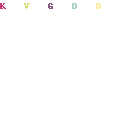Psych-up right before your event for best results (*study)
 How long before an event should you psyche yourself up? Obviously you can’t do it an hour before, then rest for an hour. But how far out from the event should you be psyching yourself up? When do you stop, so you can focus on the task at hand, and start your event? As it turns out, you’ve got about a minute or two. Runners who used visual imagery to psych themselves up before a 30m sprint, showed enhanced performance during the acceleration phase (0-10m) and an increased overall performance through the length of the run. Sprinters who waited three or five minutes after psyching themselves up, did not see the same performance increases. Check it out:
How long before an event should you psyche yourself up? Obviously you can’t do it an hour before, then rest for an hour. But how far out from the event should you be psyching yourself up? When do you stop, so you can focus on the task at hand, and start your event? As it turns out, you’ve got about a minute or two. Runners who used visual imagery to psych themselves up before a 30m sprint, showed enhanced performance during the acceleration phase (0-10m) and an increased overall performance through the length of the run. Sprinters who waited three or five minutes after psyching themselves up, did not see the same performance increases. Check it out:
Journal of Strength & Conditioning Research: November 2014 – Volume 28 – Issue 11 – p 3245–3254
doi: 10.1519/JSC.0000000000000530
Time Interval Moderates the Relationship Between Psyching-up and Actual Sprint Performance
Abstract
This study attempted to test whether the strongest effect of psyching-up (PU) strategy on actual sprint performance can be observed when the strategy is used immediately (or almost) before performance compared with when there is a delay between PU and performance. To do so, 16 male sprinters (age, 20.6 ± 1.3 years; body mass, 77.5 ± 7.1 kg; height, 180.8 ± 5.6 cm) were enrolled in a counterbalanced experimental design in which participants were randomly assigned to 10 sessions (2 [Experimental Condition: imagery vs. distraction] × 5 [Time Intervals: no interval, 1 minute, 2 minutes, 3 minutes, and 5 minutes]). Before performing the experimental tasks, participants rated: (a) the Hooper index, (b) their degree of self-confidence, and (c) after the completion of the experimental test; they rated their perceived effort. Findings showed that the imagery significantly improved sprint performance. Specifically, the imagery enhanced performance on the phase of acceleration (0–10 m) and on the overall sprint (0–30 m) when used immediately before performance and at 1- and 2-minute intervals but not for 3- and 5-minute intervals. These findings support the hypothesis that the potential effect of the PU strategy on performance vanishes over time. The pre-experimental task Hooper and self-efficacy indexes did not change across the 10 experimental sessions, reinforcing the view that the observed performance changes were directly caused by the experimental manipulation and not through any altered status of the athletes (self-efficacy, fatigue/recovery, and stress). The potential mechanisms underlying such a process and practical applications are discussed.


